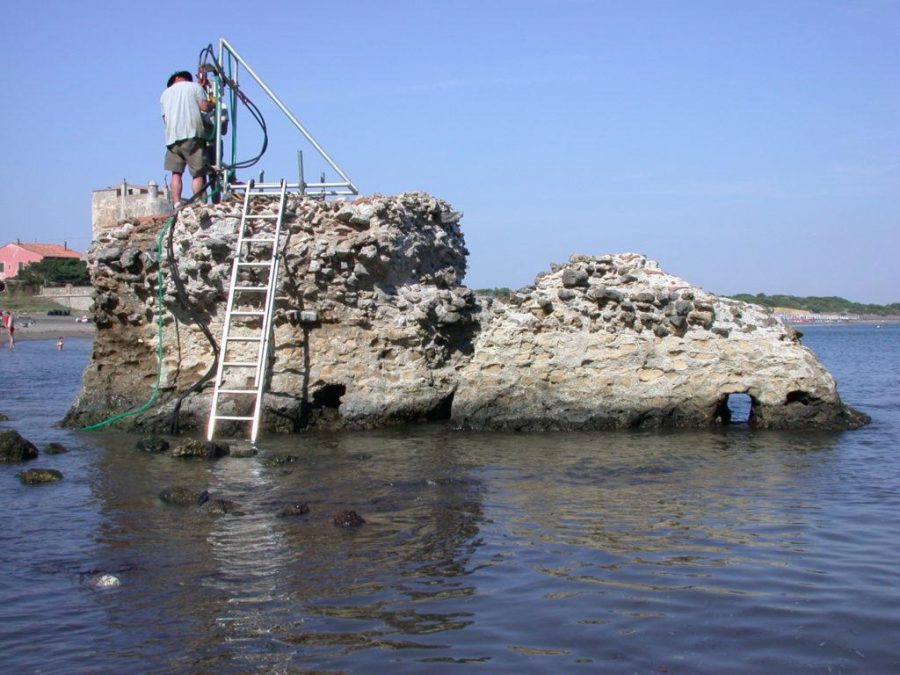Concrete is a building material made of water, gravel, sand, limestone, shells, chalk, clay and iron ore. It’s used ubiquitously in construction from building foundations to sidewalks, roads and bridges. Its lifespan tends to be only about 50 years, and its manufacture is associated with significant negative environmental impacts — including emissions of air pollutants and about 5 percent of global CO2 levels. If exposed to water, its lifespan is reduced even further.
Many Roman concrete structures, like sea breaks and piers, however, still exist 2,000 years later. In the first century CE, a Roman author and philosopher, Pliny the Elder, wrote of their concrete, “as soon as it comes into contact with the waves of the sea and is submerged [it] becomes a single stone mass, impregnable to the waves and every day stronger.”
University of Utah geologist Marie Jackson recently discovered the reason behind the durability of Roman concrete.
The material is made of quicklime, seawater, volcanic ash and rock. After curing, when the porous cement was placed in the ocean, the water filtered through it and broke down components of the volcanic ash. New minerals, called Al-tobermorite and phillipsite, formed. With small crystals shaped like plates, the rare minerals locked together to strengthen the structure. The concrete grows stronger with time as more exposure to seawater means more mineral growth. It also means the cement has some capacity to heal itself.
Making the concrete is also considerably more sustainable than the manufacture of modern concrete.
While she is primarily interested in the process itself, Jackson said the concrete would work well for the type of structures the Romans used it for — breakwaters and seawalls. However, she noted that those structures have negative environmental impacts of their own — they can destroy tidal ecosystems, which harms wildlife and can make their surroundings more vulnerable to storms.
The material wouldn’t be useful in all circumstances, because the process requires time and the concrete isn’t as strong under compression as modern concrete is. However, Jackson would like to see the material used as barriers around waste repositories and for nuclear waste treatment and disposal.
She has also advocated for its use in a tidal lagoon that’s being proposed in the United Kingdom. It would need to operate for about 120 years to recuperate the costs of construction, and modern concrete would not be able to last that long.
Before it can be used in construction, though, the recipe for the material must be found. Scientists know what’s in the concrete, but they don’t know exactly how to make it. Even if they did, the volcanic rock and ash component isn’t readily available in most of the world.
Jackson traveled to Iceland on July 17 to drill into a volcano named Surtsey to look for more insight into the process, which sometimes happens naturally at volcanic sites. She and a team of researchers hope to drill a core 500 meters deep. Jackson is also working with a geological engineer to find substitutes for the volcanic ingredients.
@EliseAbril




Anime_Edu • Oct 4, 2017 at 11:47 pm
Good article…Check the video for better understanding on Why is Roman Concrete stronger than Modern Concrete? to
https://www.youtube.com/watch?v=oP09XQhFIFA